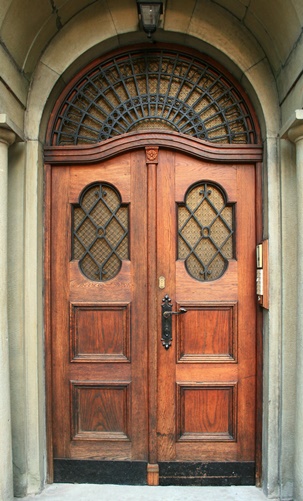https://www.buildingconservation.com/articles/linseed-oil-paints/linseed-oil-paints.htmLinseed Oil Paints and Mastics
Applications and Limitations
Peter Kaczmar
LINSEED OIL PAINTS
Linseed oil is a carrier which was commonly used in paint formulations until the mid-20th century, and is still often used in alkyd systems to make the paint more fluid, transparent and glossy. It is available in varieties such as cold-pressed, alkali-refined, sun-bleached, sun-thickened, and polymerised (also known as stand oil).
| |  |
| | In many European countries, linseed oil is a traditional finish for fine joinery where protected from the weather. |
The use of linseed oil paint can offer significant advantages over synthetic resin systems, not least in terms of longevity. According to some accounts it can last 15 years or more without maintenance. This is attributable to the fact that it is more ‘extensible’ (more elastic, less prone to brittleness) and can better accommodate shrinkage or swelling movements in wood before requiring maintenance.
However, such performance benefits seldom come without a price. In the case of linseed oil paints, they are more difficult to apply on account of their lower viscosity. Application is also labour-intensive due to the attention required to avoid runs and a propensity of the finish to incorporate dust and surface imperfections (nibs) because it tends to ‘creep’ over them.
Linseed oil paints must also be applied very thinly to avoid wrinkling on drying and have a tendency to skin in the can. Once cured they are softer and may have inferior resistance to surface abrasion, although this can be offset by fortifying the formulation with resin additives such as pine rosin, amber or semi-fossilised Kauri pine resin.
Arguably the greatest disadvantage of linseed oil paints is their tendency to disfigure on account of the growth of surface moulds and yeasts. This is probably caused by the paint allowing moisture into the substrate, enabling natural sugars, present in the wood, to migrate to the surface where they can be assimilated by the microorganisms, but it may also be caused by the build-up of dirt deposits which can provide another source of nutrients and minerals.
When used as a wood finish on its own, linseed oil dries slowly and shrinks little upon hardening. It does not deposit a discrete film over the surface as varnish does but is absorbed into the surface of the wood, leaving a shiny but not glossy surface that enhances the visual contrast of the grain of the wood. A linseed oil finish is easily repaired but offers little or no protection against scratching. Linseed oil finishes are less effective than paints based on synthetic resins at preventing the uptake of moisture, in either liquid or vapour form, into the joinery.






